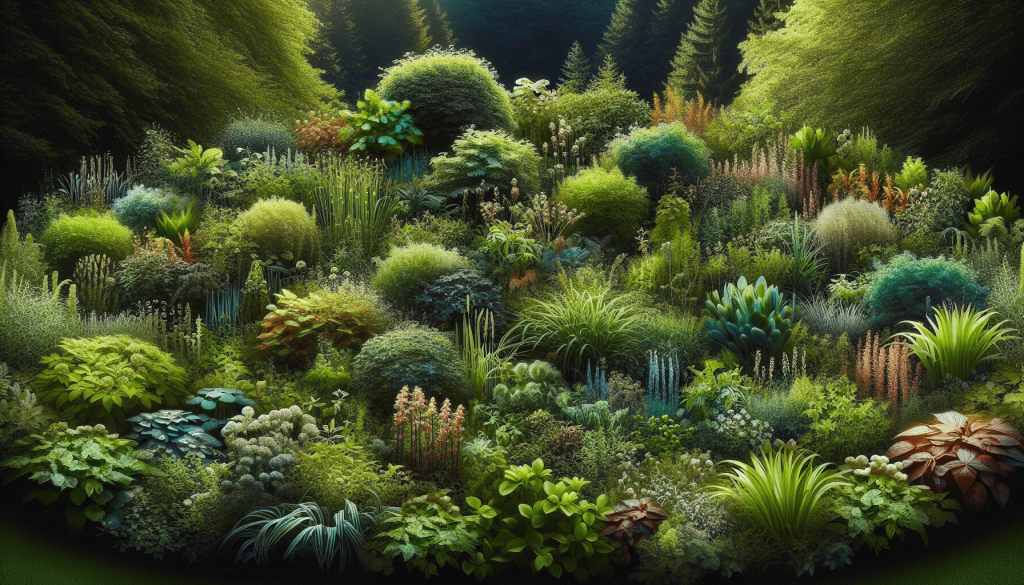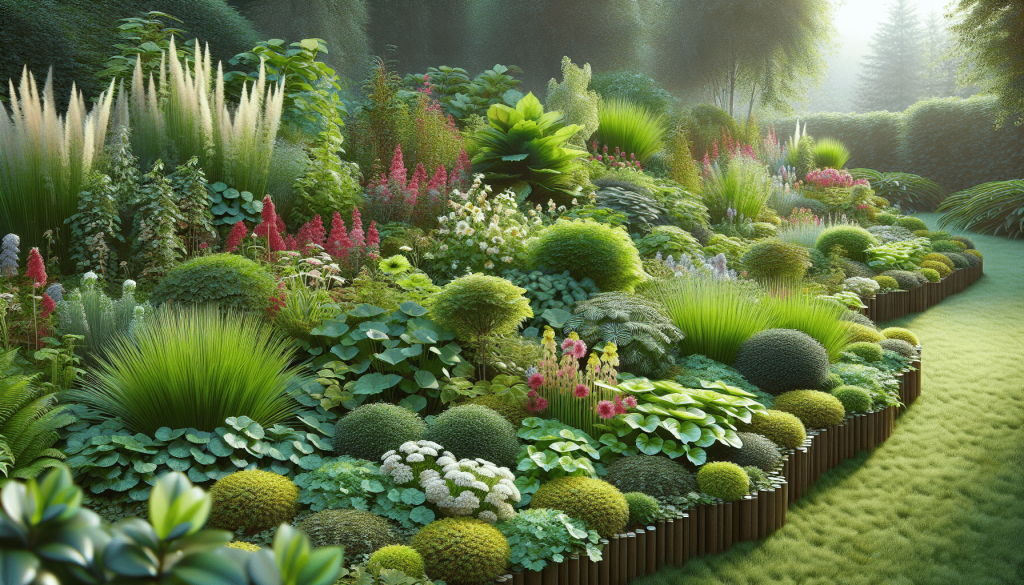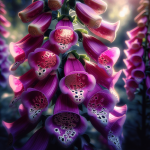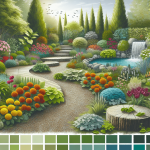This post may contain affiliate links. As an Amazon Associate, we may earn commissions from qualifying purchases.
Imagine transforming your garden into a lush, low-maintenance haven, all while conserving water and reducing the need for frequent upkeep. One of the best ways to achieve this serene outdoor space is by incorporating ground cover plants that thrive with minimal care. This article explores a variety of plants perfect for covering ground expansively, requiring little from you but offering so much in return. From vibrant flowers to elegant foliage, these selections promise to enrich your garden with beauty and practicality. So, let’s uncover the gems that can make your gardening efforts both simpler and more rewarding.

Understanding Ground Cover Plants
Definition and importance of ground cover plants
Ground cover plants play a crucial role in landscaping and garden design by covering the soil with dense foliage. These plants are not merely aesthetic but serve practical purposes like moisture retention, weed suppression, and soil erosion control. Importantly, they fill spaces where other plants might struggle, creating a lush, green carpet that enhances the beauty of your landscape.
Benefits of low-maintenance ground cover plants in landscaping
Low-maintenance ground cover plants are a boon for any gardener. They require minimal care – less watering, no mowing, and only occasional pruning to keep them in check. Such plants are cost-effective in the long run, greatly reducing the time and resources needed for garden upkeep. Plus, they provide year-round visual interest, transforming your garden into a vibrant canvas of textures and colors.
Factors to consider when choosing ground cover plants
When selecting ground cover plants for your garden, consider the local climate, soil type, sun exposure, and the level of foot traffic in the area. It’s essential to choose plants that thrive under your specific conditions to ensure healthy growth and minimal maintenance. Also, think about the aesthetic you’re aiming for, as ground covers vary greatly in height, color, and texture.
Creeping Thyme
Overview and characteristics
Creeping Thyme, with its small, fragrant leaves and tendency to spread, renders it an excellent choice for ground cover. It blooms with tiny purple or pink flowers in summer, providing a stunning visual and attracting bees to your garden. Hardy and drought-resistant, Creeping Thyme forms a dense mat that withstands foot traffic, making it ideal for paths or patios.
Ideal growing conditions
Thriving in full sun to partial shade, Creeping Thyme prefers well-drained soil. It is well-suited to rocky or sandy conditions and is remarkably tolerant of drought, once established. Minimal watering and no fertilization keep it healthy and spreading.
Benefits and uses in the garden
The aromatic nature of Creeping Thyme, coupled with its aesthetic appeal, makes it a popular choice for borders, rock gardens, and between stepping stones. Its resilience to foot traffic allows it to be used in areas of moderate use, and its drought tolerance makes it perfect for xeriscaping or low-water gardens.
Sedum
Types of sedum suitable for ground cover
Sedum, also known as stonecrop, comes in various types suitable for ground cover, such as Sedum acre and Sedum reflexum. These varieties form low, dense mats that are adept at covering large areas quickly, thriving in poor soil and requiring minimal care.
Care and maintenance
Sedum is incredibly low-maintenance. It prefers full sun but can tolerate partial shade and thrives in well-drained, rocky, or sandy soil. Watering is rarely needed except during prolonged dry spells, and no fertilization is necessary. Pruning can help maintain its shape and encourage denser growth.
Advantages of using sedum in your garden
Sedum’s ability to thrive in difficult conditions, coupled with its succulent leaves and star-shaped flowers, makes it a visually appealing and practical choice. It’s excellent for erosion control, attracting pollinators, and filling gaps in rock gardens or borders with a vibrant splash of color.
Moss
Different varieties of moss for ground covering
There are numerous moss varieties suitable for ground covering, including sheet moss and cushion moss. Each type brings a unique texture and greenery to the garden, thriving in areas where other plants might struggle.
How to successfully grow moss in shady areas
Moss prefers moist, shady conditions, making it perfect for those tricky garden spots with little sunlight. It requires a compact soil surface and consistent moisture to establish and spread. Regular watering, especially in dry conditions, will help moss thrive.
Moss as an eco-friendly ground cover option
Moss is an excellent eco-friendly ground cover choice. It requires no mowing, fertilizing, or pesticide use, making it a sustainable option for covering bare soil. Additionally, its ability to absorb pollutants and carbon dioxide benefits the environment, making your garden a green haven.

Ajuga (Bugleweed)
Characteristics of Ajuga
Ajuga, or Bugleweed, is known for its rapid growth and attractive foliage, often featuring leaves with purple, bronze, or variegated patterns. Its spikes of blue, violet, pink, or white flowers in spring add a stunning visual impact to any garden setting.
Cultivation tips for healthy growth
Ajuga thrives in a range of conditions from full sun to shade and prefers moist, well-drained soil. However, it’s adaptable and can tolerate poorer soils. To prevent crown rot, avoid planting Ajuga in overly wet areas. Division every few years helps manage its spread and keeps plantings vigorous.
Utilizing Ajuga in various garden settings
Ajuga’s dense foliage and colorful appearance make it an excellent ground cover for borders, under trees, or in rocky gardens. It’s also effective at preventing soil erosion on slopes. Its versatility and low maintenance requirements make Ajuga a favored choice for many gardeners.
Ivy
Types of ivy used as ground cover
Various ivy types, such as English ivy (Hedera helix) and Algerian ivy (Hedera canariensis), are popular for ground cover due to their vigorous growth and evergreen foliage. These plants adapt well to different light conditions and soil types, making them versatile options for covering ground.
Planting and care instructions
Ivy thrives in well-drained soil and can grow in full sun to full shade, depending on the variety. While it’s adaptable to many conditions, ivy benefits from occasional trimming to control its spread and promote denser growth. Be mindful of its invasive nature in some regions and manage its growth accordingly.
The pros and cons of growing ivy in the landscape
The dense foliage of ivy provides excellent ground cover, weed suppression, and soil erosion control. However, its aggressive growth can make it invasive, potentially damaging structures or overtaking other plants in the garden. Responsible management and regular pruning can help mitigate these issues.
Pachysandra
Growth habits and appearance
Pachysandra, a dense, evergreen perennial, forms a lush carpet of glossy, dark green leaves. It produces small, white flowers in early spring, adding a subtle charm to its foliage. Pachysandra is a favorite for its uniform growth and ability to thrive in shade.
Ideal conditions for thriving pachysandra beds
For best results, plant Pachysandra in moist, well-drained soil and shaded to partially shaded locations. It’s suited to acidic soils but can adapt to neutral pH levels with adequate moisture. Once established, Pachysandra requires little maintenance, though it benefits from occasional mulching.
Pachysandra’s role in preventing soil erosion
With its dense growth habit, Pachysandra is effective at preventing soil erosion on slopes or in areas prone to erosion. Its thick mat of foliage protects the soil from heavy rains and wind, making it an excellent choice for challenging areas in the landscape.
Vinca Minor (Periwinkle)
Characteristics and benefits
Vinca Minor, or Periwinkle, is renowned for its trailing stems, glossy evergreen leaves, and lavender to white flowers that bloom in spring. This hardy plant is excellent for covering large areas quickly, providing year-round foliage, and suppressing weeds.
Guidelines for planting and maintenance
Periwinkle thrives in partial to full shade and can adapt to a wide range of soil types, though it prefers well-drained conditions. It requires little care once established, but spreading can be controlled with regular pruning. Watering during dry spells will help maintain its vigor.
How to control its spread and prevent it from becoming invasive
While Vinca Minor is valued for its rapid growth, it can become invasive in some areas. To prevent unwanted spreading, plant it in contained areas or use physical barriers. Regular monitoring and pruning of new shoots can help manage its growth within desired bounds.
Lamium (Dead Nettles)
Overview of Lamium varieties
Lamium, known as Dead Nettles, offers various varieties with colorful foliage and flowers. Plants like Lamium maculatum feature striking leaves and clusters of pink, purple, or white flowers, making them attractive ground cover options.
Tips for successful cultivation
Dead Nettles prefer partial shade and well-drained soil rich in organic matter. They’re tolerant of a range of soil types and conditions but benefit from regular watering in dry periods. Spreading via underground runners, Lamium can fill in areas quickly but remains relatively easy to control.
Benefits of integrating Lamium into your garden
Aside from its decorative appeal, Lamium is valuable for attracting pollinators and suppressing weeds with its dense foliage. Its tolerance of shade makes it an excellent choice for brightening up darker areas of the garden, combining beauty and functionality in ground cover planting.
Incorporating Ground Covers in Landscape Design
Creating contrasts with textures and colors
Ground cover plants can significantly enhance the visual appeal of your garden through contrasts in texture and color. Combining different ground covers or pairing them with taller plants adds depth and interest to your landscape. Consider the colors of blooms and foliage to create a harmonious or striking palette.
Ground covers for walkways and borders
Using ground covers along walkways and borders not only defines these areas but also introduces an element of beauty and texture. Select varieties like Creeping Thyme or Sedum for walkways, as they can withstand foot traffic. For borders, Ajuga or Lamium adds a splash of color and texture.
Enhancing biodiversity with low-maintenance ground covers
Incorporating a variety of ground covers in your garden can boost local biodiversity, providing habitats and food sources for pollinators and other wildlife. Choosing native ground covers or those suited to your specific climate conditions contributes to a healthy, sustainable garden ecosystem, benefiting both your garden and the environment.
By understanding the unique benefits and care requirements of these low-maintenance ground cover plants, you can create a beautiful, thriving garden that’s easy to maintain and a joy to behold.








